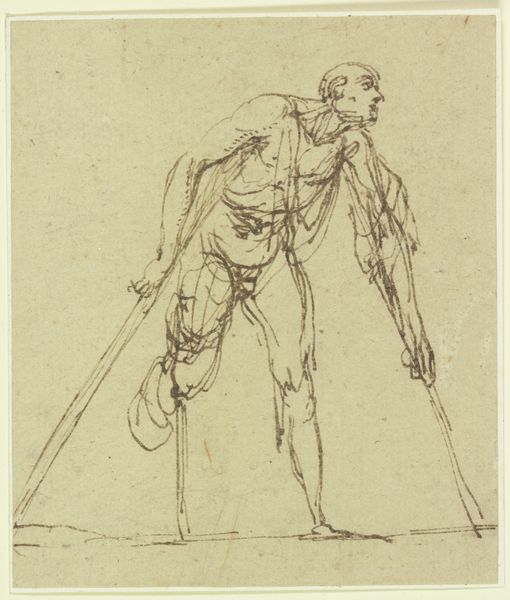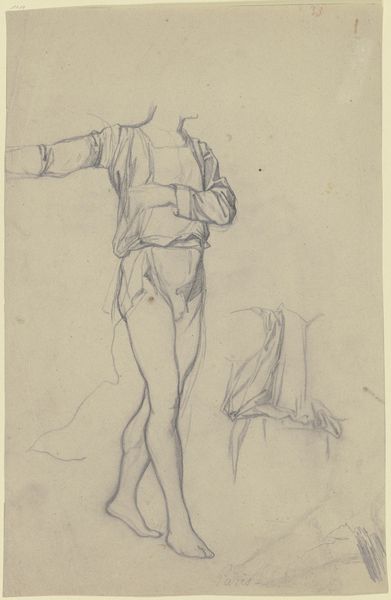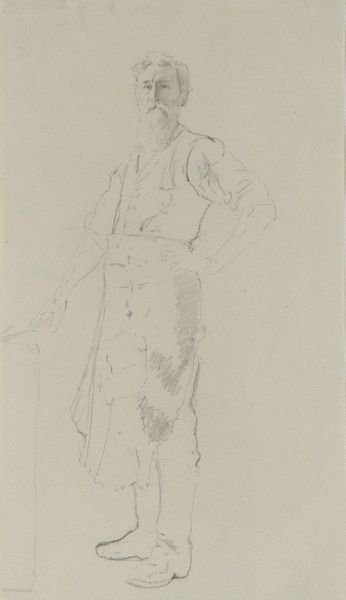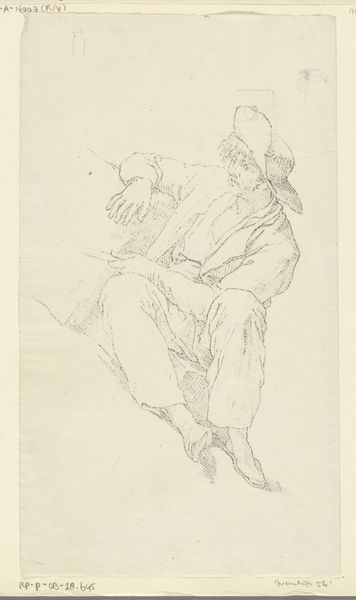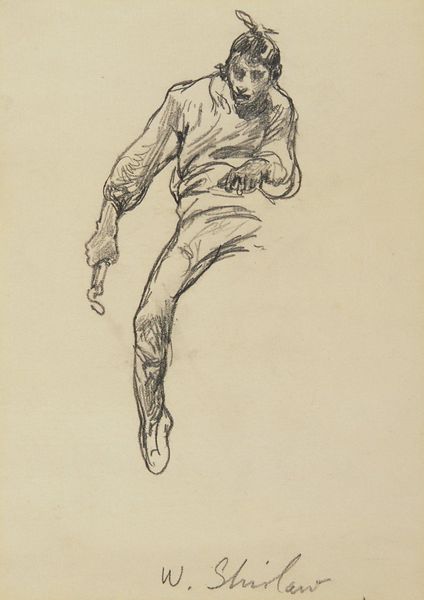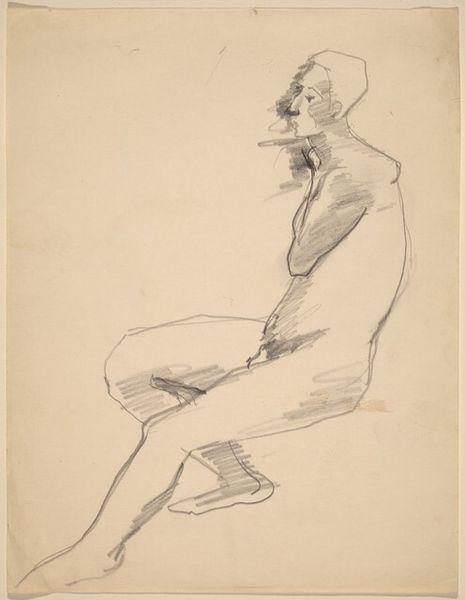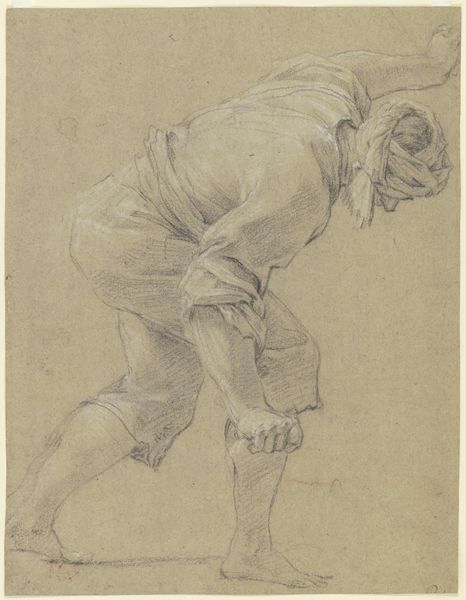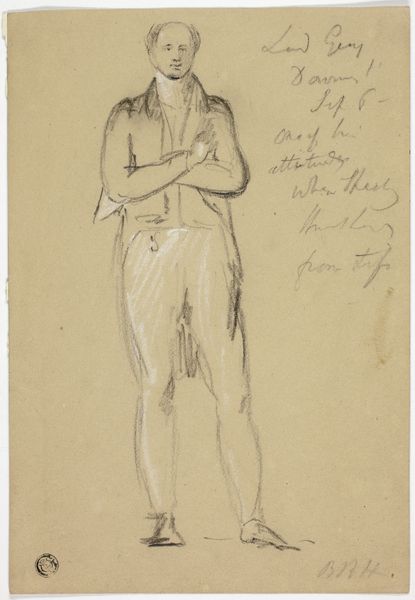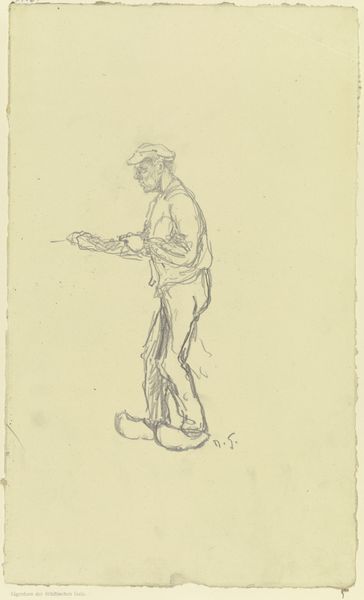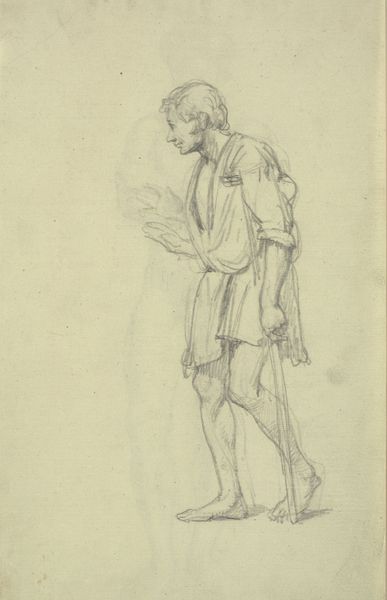
drawing, pencil
#
portrait
#
drawing
#
imaginative character sketch
#
light pencil work
#
cartoon sketch
#
figuration
#
personal sketchbook
#
idea generation sketch
#
ink drawing experimentation
#
pen-ink sketch
#
pencil
#
sketchbook drawing
#
storyboard and sketchbook work
#
sketchbook art
#
realism
Dimensions: height 100 mm, width 145 mm
Copyright: Rijks Museum: Open Domain
Johannes Tavenraat made this sketch on paper in the Netherlands during the early to mid-19th century. The image is a figure study and probably an exercise in preparation for larger history paintings. During this period, the Dutch art world was dominated by the traditions of the academy, and artists would have spent many hours copying plaster casts and drawing from life in order to master the human form. Figure studies like this one would have served as evidence of an artist's skill and formed an important part of their training. The Rijksmuseum itself, as an institution, played a role in shaping artistic tastes and promoting certain styles of art. To understand this work more fully, we can look to sources such as academic treatises, artists' biographies, and exhibition reviews. By examining the social and institutional context in which art is made, we can gain a deeper appreciation of its meaning and significance. Art history is not just about identifying individual geniuses, but about understanding the complex forces that shape artistic production.
Comments
No comments
Be the first to comment and join the conversation on the ultimate creative platform.
